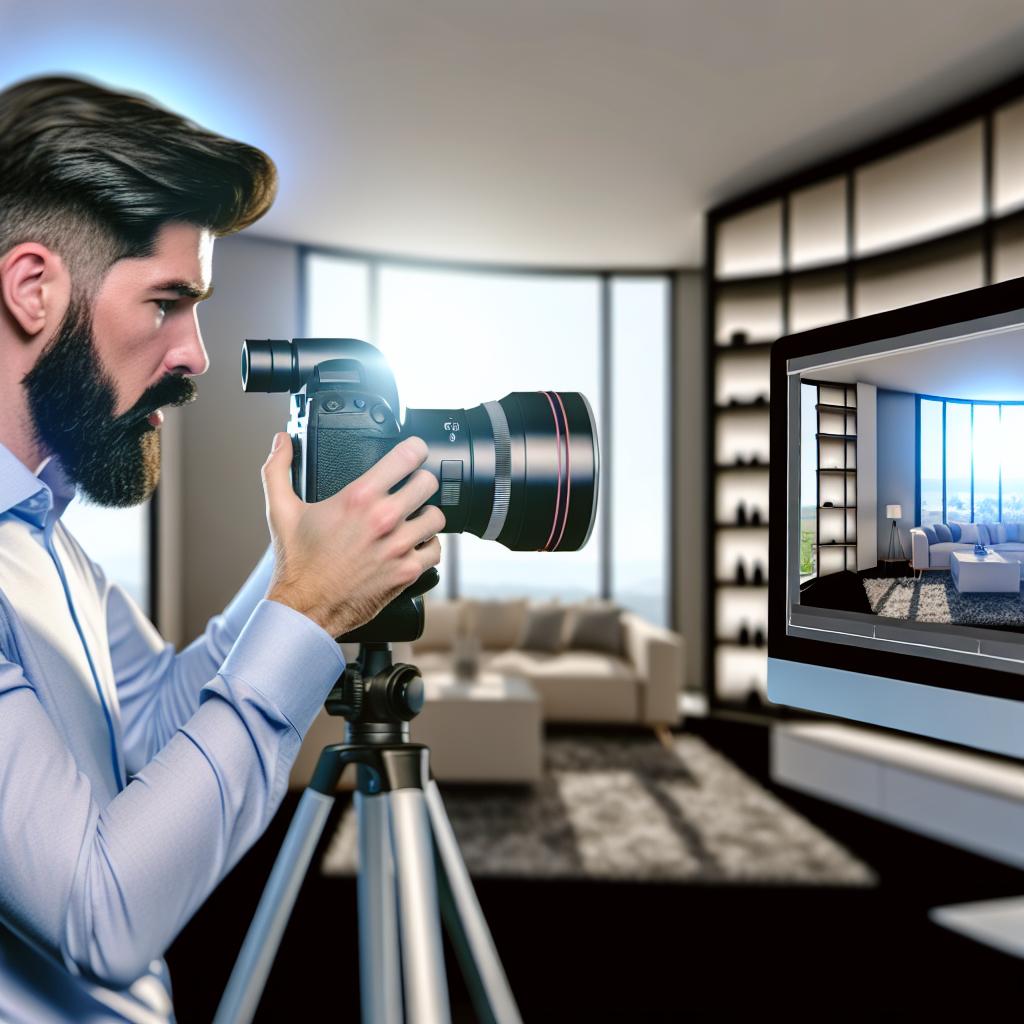“Mastering Virtual Tour Photography: Essential Tips for Realtors to Enhance Their Listings”
In the ever-evolving world of real estate, mastering virtual tour photography has become a pivotal skill for realtors aiming to enhance their property listings. With the growing demand for virtual viewings, creating immersive and captivating visuals can significantly set properties apart in a saturated market. This guide will delve into essential tips and techniques, emphasizing the importance of exceptional photography in attracting potential buyers and achieving successful sales.
Understanding the Essentials of Virtual Tour Photography
To effectively capture the essence of a property through virtual tour photography, it’s crucial to understand the fundamentals. Begin with investing in quality equipment, such as a high-resolution camera and a 360-degree lens, which are indispensable for capturing comprehensive and detailed visuals. Lighting is another pivotal element; natural light should be maximized wherever possible, complemented by supplementary lighting to enhance areas in shadow. Additionally, mastering the art of composition—focusing on angles and perspectives—can profoundly impact the viewer’s experience.
Furthermore, employing post-processing software is vital for refining images, correcting distortions, and ensuring colors accurately reflect real life. Virtual tour platforms often offer integration features that can enhance user accessibility, embedding virtual tours directly into real estate websites and social media platforms, thereby reaching a broader audience. Mastering these essentials will not only elevate the quality of your listings but also build credibility and trust with potential clients.
The Impact of Virtual Tours on Real Estate Sales
Incorporating virtual tours into real estate marketing strategies has proven to be a game-changer. Virtual tours create an immersive experience that allows potential buyers to explore a property in detail, offering them a realistic sense of space and layout without the need for physical presence. This convenience can significantly shorten decision-making processes, as buyers can quickly identify properties that meet their criteria, thus speeding up sales.
Moreover, properties featuring virtual tours have been demonstrated to receive higher engagement rates compared to those with traditional photos alone. This increased interaction often translates to more qualified leads, as interested buyers are more likely to reach out after experiencing an engaging virtual tour. The ability to revisit tours multiple times at their convenience further solidifies buyer interest, increasing the likelihood of conversion.
By leveraging virtual tours, real estate professionals not only enhance their listings but also position themselves as forward-thinking in a competitive industry. The integration of professional virtual tour photography aligns with modern consumer expectations, reducing time on market and ultimately driving successful sales results.
Maximizing Return on Investment through Professional Photography
Investing in professional virtual tour photography can yield substantial returns for realtors. High-quality visuals are foundational in creating first impressions, which are crucial in the online real estate landscape. Prospective buyers are more inclined to explore listings with captivating images, and virtual tours enhance this appeal by offering a multidimensional view of properties.
An initial investment in professional equipment and photography services can raise the market value perception of properties, often resulting in higher selling prices. Additionally, streamlined property marketing that incorporates professional imagery can help reduce time on the market, ultimately enhancing the return on investment for realtors.
Furthermore, an enhanced online presence through stunning visuals attracts more professional and discerning clientele. This reputation can lead to repeat business and referrals, further extending the impact of professional photography beyond a single transaction. Realtors who prioritize visual quality in their marketing materials ultimately gain a competitive edge, both in attracting clients and achieving financial success.
Choosing the Right Virtual Tour Software
Selecting the appropriate virtual tour software is a critical step in creating engaging virtual experiences. The software you choose should offer a user-friendly interface, compatibility with various devices, and seamless integration with real estate platforms. Features such as interactive hotspots, floorplan integration, and VR capability can enrich the virtual tour experience, making it more informative and engaging for prospective buyers.
Consider software that supports high-resolution imaging to ensure that the quality of the visuals is preserved. Customizable branding is also an important feature, as it allows realtors to incorporate their own logos and contact details, maintaining professionalism throughout the virtual tour.
Additionally, evaluating the software’s analytics capabilities can provide valuable insights into user behavior, helping realtors refine their marketing strategies over time. By choosing the right software, realtors can ensure that their virtual tours are not only visually appealing but also effective in converting leads and closing sales.
Virtual Tour Marketing Strategies for Maximum Exposure
To maximize the reach and impact of virtual tour photography, it’s imperative to implement strategic marketing approaches. Start by integrating virtual tours into all available online listings, ensuring they are accessible across major real estate platforms and social media channels. This increases visibility and engagement, drawing in a wider audience of potential buyers.
Promote virtual tours through email marketing campaigns targeting both potential and past clients. Highlight the benefits of virtual tours in these communications, such as the ability to explore homes from the comfort of their own environment. Additionally, consider paid advertising options, such as social media ads and Google Ads, to target demographics most interested in your listings.
Networking with other real estate professionals and industry influencers can also expand the reach of your virtual tours. Collaborations and partnerships can introduce your listings to new audiences, enhancing exposure and increasing potential buyer inquiries. By implementing these marketing strategies, realtors can ensure their virtual tours receive maximum exposure, driving engagement and elevating overall marketing success.




